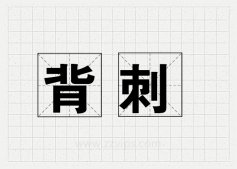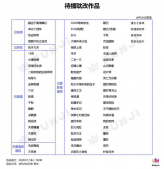pyspark创建DataFrame
为了便于操作,使用pyspark时我们通常将数据转为DataFrame的形式来完成清洗和分析动作。
RDD和DataFrame
在上一篇pyspark基本操作有提到RDD也是spark中的操作的分布式数据对象。
这里简单看一下RDD和DataFrame的类型。
|
1
2
|
print(type(rdd)) # <class 'pyspark.rdd.RDD'>print(type(df)) # <class 'pyspark.sql.dataframe.DataFrame'> |
翻阅了一下源码的定义,可以看到他们之间并没有继承关系。
|
1
2
3
4
5
6
7
|
class RDD(object): """ A Resilient Distributed Dataset (RDD), the basic abstraction in Spark. Represents an immutable, partitioned collection of elements that can be operated on in parallel. """ |
|
1
2
3
4
5
6
7
|
class DataFrame(object): """A distributed collection of data grouped into named columns. A :class:`DataFrame` is equivalent to a relational table in Spark SQL, and can be created using various functions in :class:`SparkSession`:: ... """ |
RDD是一种弹性分布式数据集,Spark中的基本抽象。表示一种不可变的、分区储存的集合,可以进行并行操作。
DataFrame是一种以列对数据进行分组表达的分布式集合, DataFrame等同于Spark SQL中的关系表。相同点是,他们都是为了支持分布式计算而设计。
但是RDD只是元素的集合,但是DataFrame以列进行分组,类似于MySQL的表或pandas中的DataFrame。

实际工作中,我们用的更多的还是DataFrame。
使用二元组创建DataFrame
尝试第一种情形发现,仅仅传入二元组,结果是没有列名称的。
于是我们尝试第二种,同时传入二元组和列名称。
|
1
2
3
4
5
6
7
8
|
a = [('Alice', 1)]output = spark.createDataFrame(a).collect()print(output)# [Row(_1='Alice', _2=1)]output = spark.createDataFrame(a, ['name', 'age']).collect()print(output)# [Row(name='Alice', age=1)] |
这里collect()是按行展示数据表,也可以使用show()对数据表进行展示。
|
1
2
3
4
5
6
7
8
9
10
11
12
13
|
spark.createDataFrame(a).show()# +-----+---+# | _1| _2|# +-----+---+# |Alice| 1|# +-----+---+spark.createDataFrame(a, ['name', 'age']).show()# +-----+---+# | name|age|# +-----+---+# |Alice| 1|# +-----+---+ |
使用键值对创建DataFrame
|
1
2
3
4
5
|
d = [{'name': 'Alice', 'age': 1}]output = spark.createDataFrame(d).collect()print(output)# [Row(age=1, name='Alice')] |
使用rdd创建DataFrame
|
1
2
3
4
5
6
7
8
9
|
a = [('Alice', 1)]rdd = sc.parallelize(a)output = spark.createDataFrame(rdd).collect()print(output)output = spark.createDataFrame(rdd, ["name", "age"]).collect()print(output)# [Row(_1='Alice', _2=1)]# [Row(name='Alice', age=1)] |
基于rdd和ROW创建DataFrame
|
1
2
3
4
5
6
7
8
9
10
11
|
from pyspark.sql import Rowa = [('Alice', 1)]rdd = sc.parallelize(a)Person = Row("name", "age")person = rdd.map(lambda r: Person(*r))output = spark.createDataFrame(person).collect()print(output)# [Row(name='Alice', age=1)] |
基于rdd和StructType创建DataFrame
|
1
2
3
4
5
6
7
8
9
10
11
12
13
14
|
from pyspark.sql.types import *a = [('Alice', 1)]rdd = sc.parallelize(a)schema = StructType( [ StructField("name", StringType(), True), StructField("age", IntegerType(), True) ])output = spark.createDataFrame(rdd, schema).collect()print(output)# [Row(name='Alice', age=1)] |
基于pandas DataFrame创建pyspark DataFrame
df.toPandas()可以把pyspark DataFrame转换为pandas DataFrame。
|
1
2
3
4
5
6
7
8
9
10
|
df = spark.createDataFrame(rdd, ['name', 'age'])print(df) # DataFrame[name: string, age: bigint]print(type(df.toPandas())) # <class 'pandas.core.frame.DataFrame'># 传入pandas DataFrameoutput = spark.createDataFrame(df.toPandas()).collect()print(output)# [Row(name='Alice', age=1)] |
创建有序的DataFrame
|
1
2
3
4
5
6
7
|
output = spark.range(1, 7, 2).collect()print(output)# [Row(id=1), Row(id=3), Row(id=5)]output = spark.range(3).collect()print(output)# [Row(id=0), Row(id=1), Row(id=2)] |
通过临时表得到DataFrame
|
1
2
3
4
5
|
spark.registerDataFrameAsTable(df, "table1")df2 = spark.table("table1")b = df.collect() == df2.collect()print(b)# True |
配置DataFrame和临时表
创建DataFrame时指定列类型
在createDataFrame中可以指定列类型,只保留满足数据类型的列,如果没有满足的列,会抛出错误。
|
1
2
3
4
5
6
7
8
9
10
11
12
13
14
15
16
|
a = [('Alice', 1)]rdd = sc.parallelize(a)# 指定类型于预期数据对应时,正常创建output = spark.createDataFrame(rdd, "a: string, b: int").collect()print(output) # [Row(a='Alice', b=1)]rdd = rdd.map(lambda row: row[1])print(rdd) # PythonRDD[7] at RDD at PythonRDD.scala:53# 只有int类型对应上,过滤掉其他列。output = spark.createDataFrame(rdd, "int").collect()print(output) # [Row(value=1)]# 没有列能对应上,会抛出错误。output = spark.createDataFrame(rdd, "boolean").collect()# TypeError: field value: BooleanType can not accept object 1 in type <class 'int'> |
注册DataFrame为临时表
|
1
2
|
spark.registerDataFrameAsTable(df, "table1")spark.dropTempTable("table1") |
获取和修改配置
|
1
2
3
4
|
print(spark.getConf("spark.sql.shuffle.partitions")) # 200print(spark.getConf("spark.sql.shuffle.partitions", u"10")) # 10print(spark.setConf("spark.sql.shuffle.partitions", u"50")) # Noneprint(spark.getConf("spark.sql.shuffle.partitions", u"10")) # 50 |
注册自定义函数
|
1
2
3
4
5
6
7
8
9
10
11
12
13
14
|
spark.registerFunction("stringLengthString", lambda x: len(x))output = spark.sql("SELECT stringLengthString('test')").collect()print(output)# [Row(stringLengthString(test)='4')]spark.registerFunction("stringLengthString", lambda x: len(x), IntegerType())output = spark.sql("SELECT stringLengthString('test')").collect()print(output)# [Row(stringLengthString(test)=4)]spark.udf.register("stringLengthInt", lambda x: len(x), IntegerType())output = spark.sql("SELECT stringLengthInt('test')").collect()print(output)# [Row(stringLengthInt(test)=4)] |
查看临时表列表
可以查看所有临时表名称和对象。
|
1
2
3
4
5
6
7
8
9
10
|
spark.registerDataFrameAsTable(df, "table1")print(spark.tableNames()) # ['table1']print(spark.tables()) # DataFrame[database: string, tableName: string, isTemporary: boolean]print("table1" in spark.tableNames()) # Trueprint("table1" in spark.tableNames("default")) # Truespark.registerDataFrameAsTable(df, "table1")df2 = spark.tables()df2.filter("tableName = 'table1'").first()print(df2) # DataFrame[database: string, tableName: string, isTemporary: boolean] |
从其他数据源创建DataFrame
MySQL
前提是需要下载jar包。
Mysql-connector-java.jar
|
1
2
3
4
5
6
7
8
9
10
11
12
13
|
from pyspark import SparkContextfrom pyspark.sql import SQLContextimport pyspark.sql.functions as Fsc = SparkContext("local", appName="mysqltest")sqlContext = SQLContext(sc)df = sqlContext.read.format("jdbc").options( url="jdbc:mysql://localhost:3306/mydata?user=root&password=mysql&" "useUnicode=true&characterEncoding=utf-8&useJDBCCompliantTimezoneShift=true&" "useLegacyDatetimeCode=false&serverTimezone=UTC ", dbtable="detail_data").load()df.show(n=5)sc.stop() |
参考
RDD和DataFrame的区别
spark官方文档 翻译 之pyspark.sql.SQLContext
到此这篇关于pyspark创建DataFrame的几种方法的文章就介绍到这了,更多相关pyspark创建DataFrame 内容请搜索服务器之家以前的文章或继续浏览下面的相关文章希望大家以后多多支持服务器之家!
原文链接:https://blog.csdn.net/weixin_39198406/article/details/104916715





